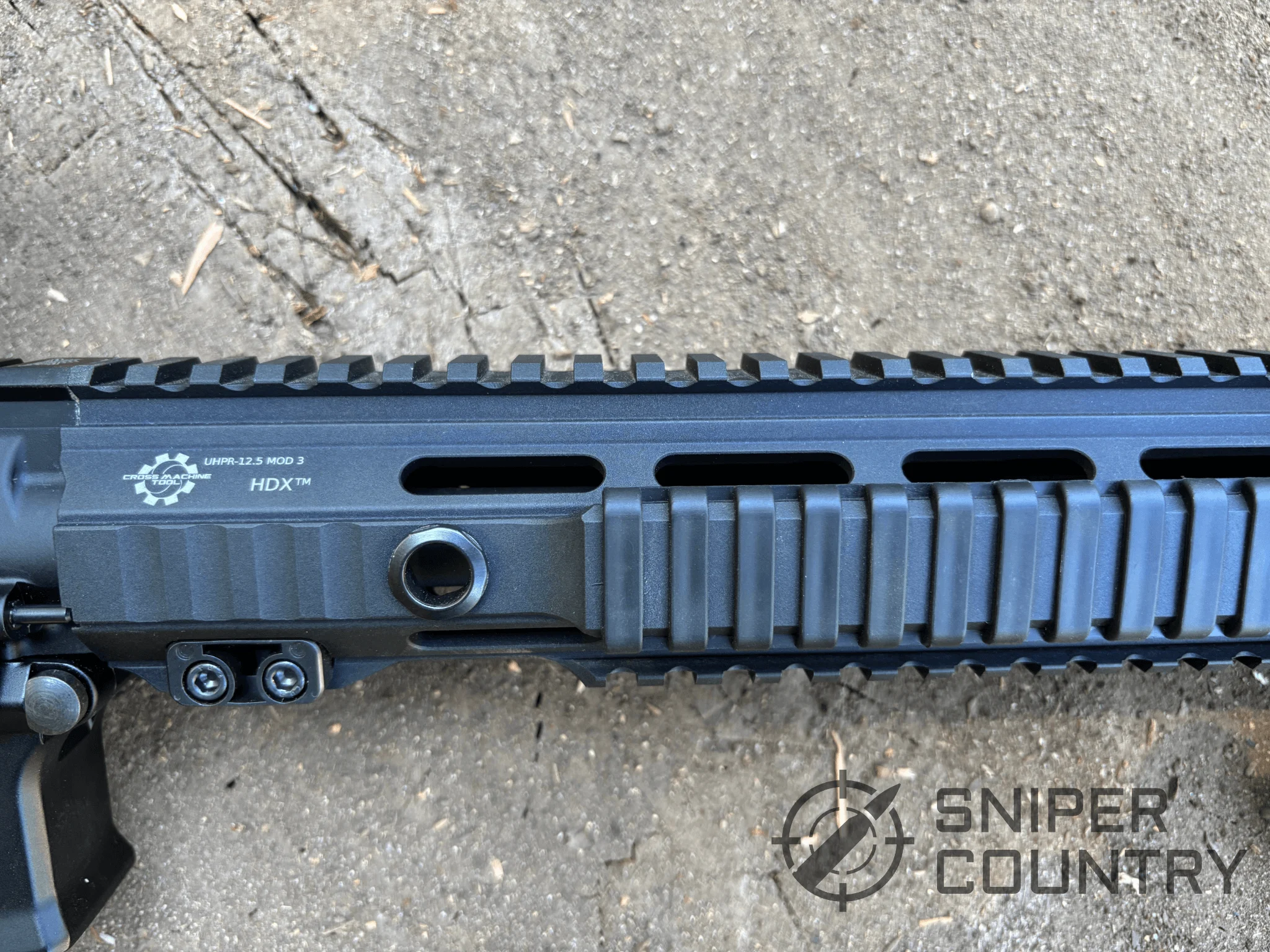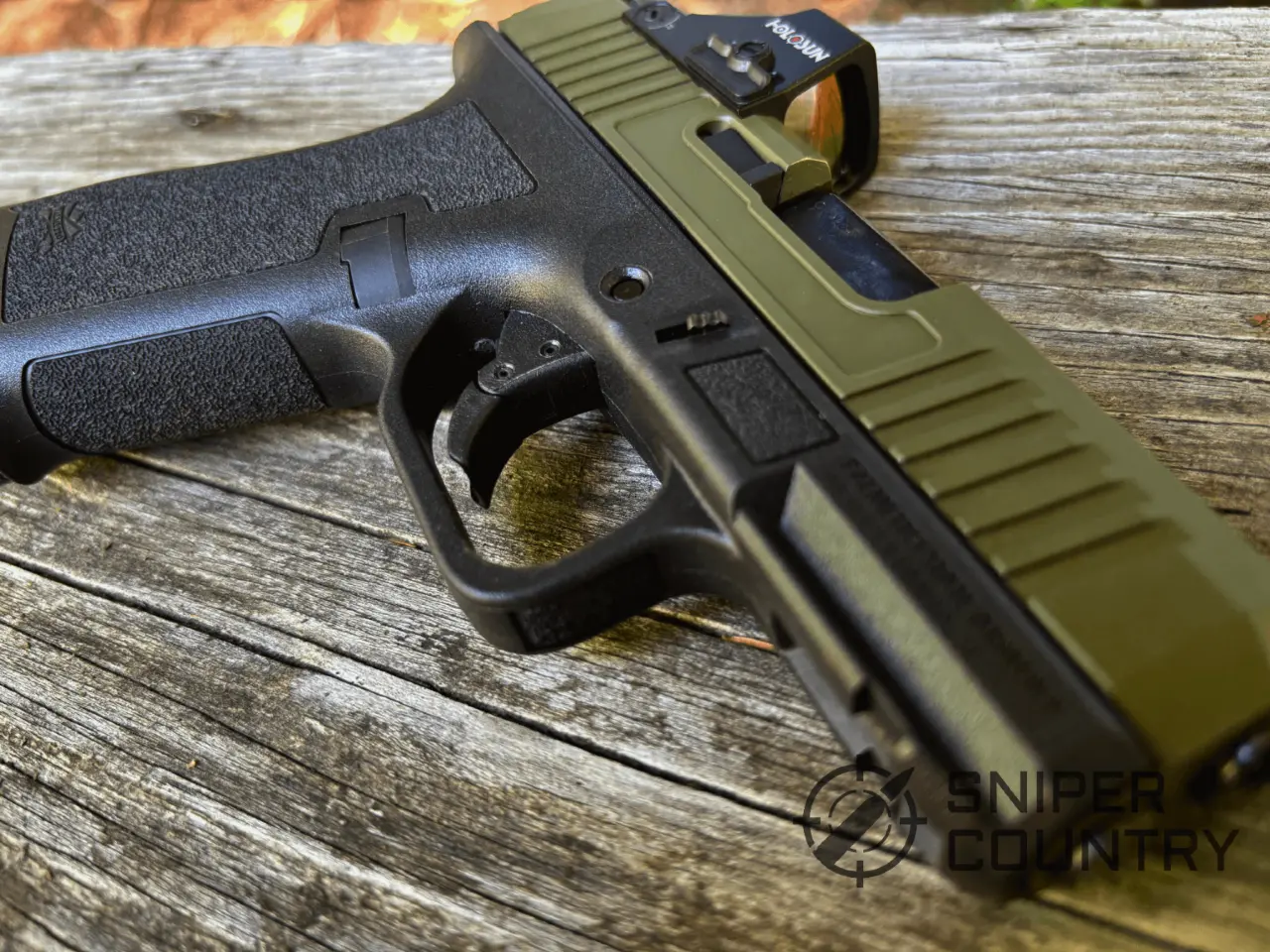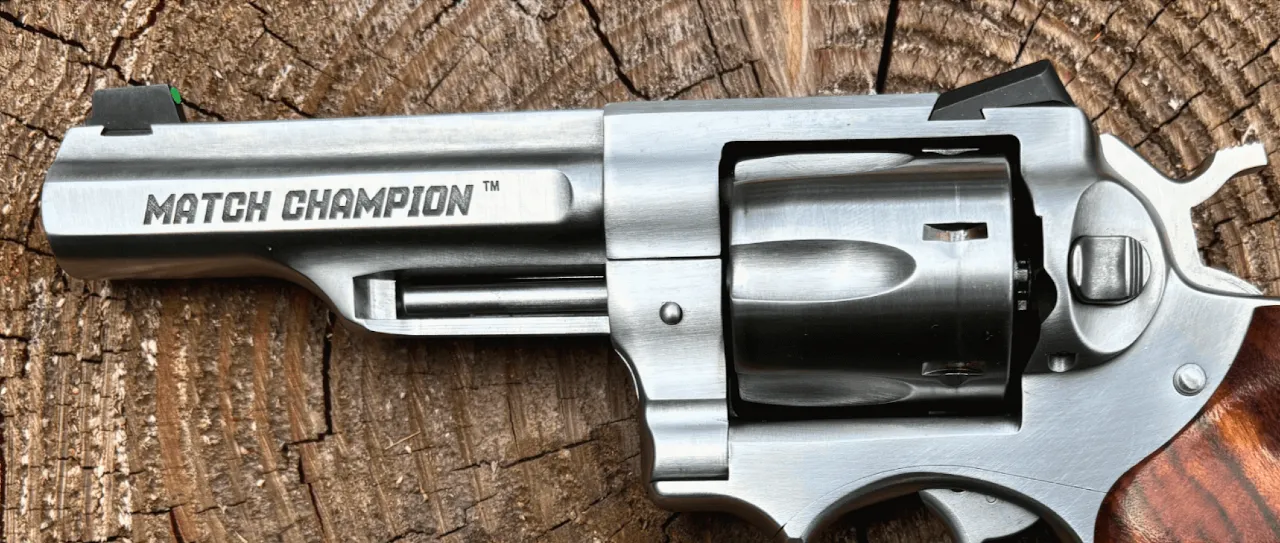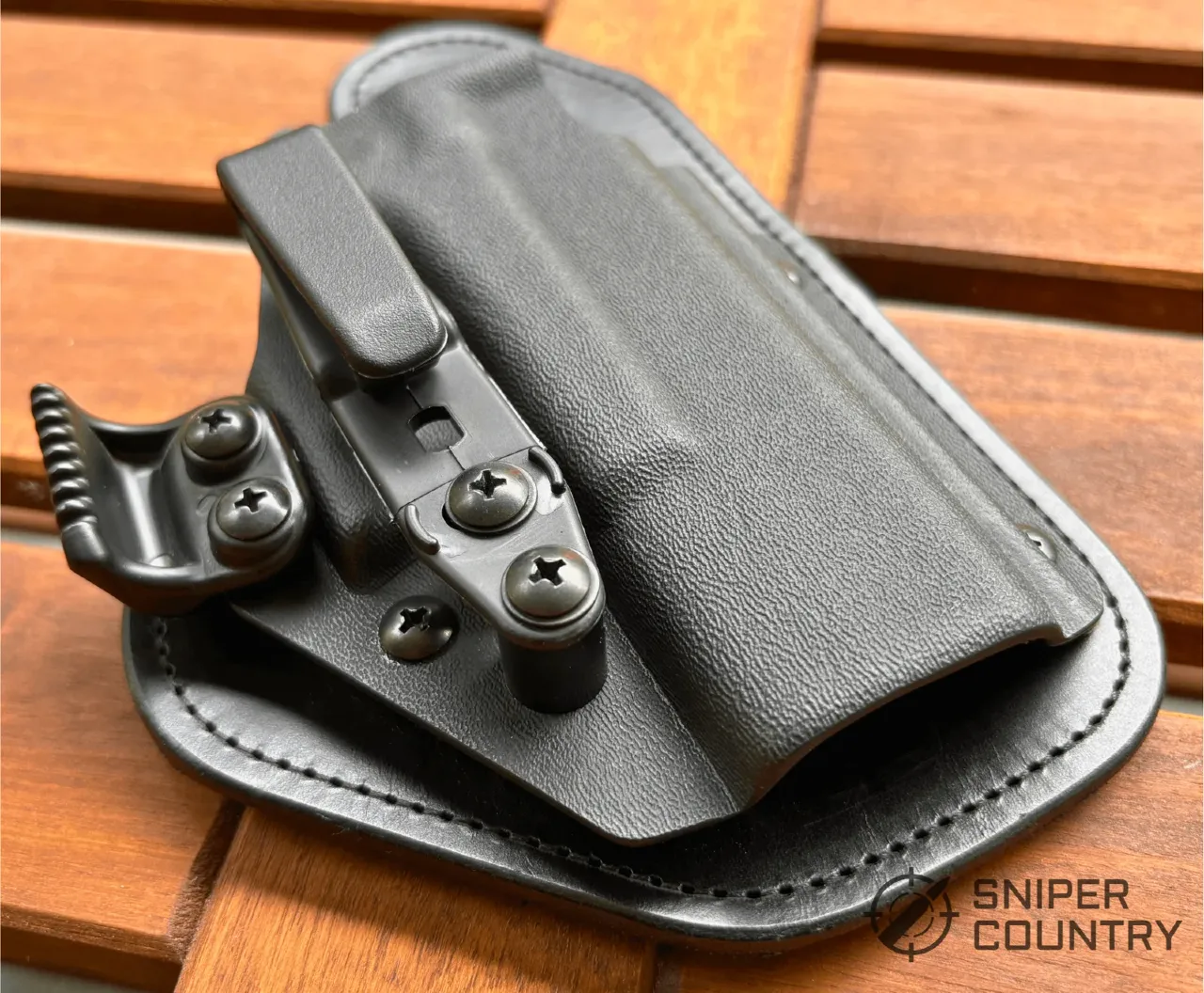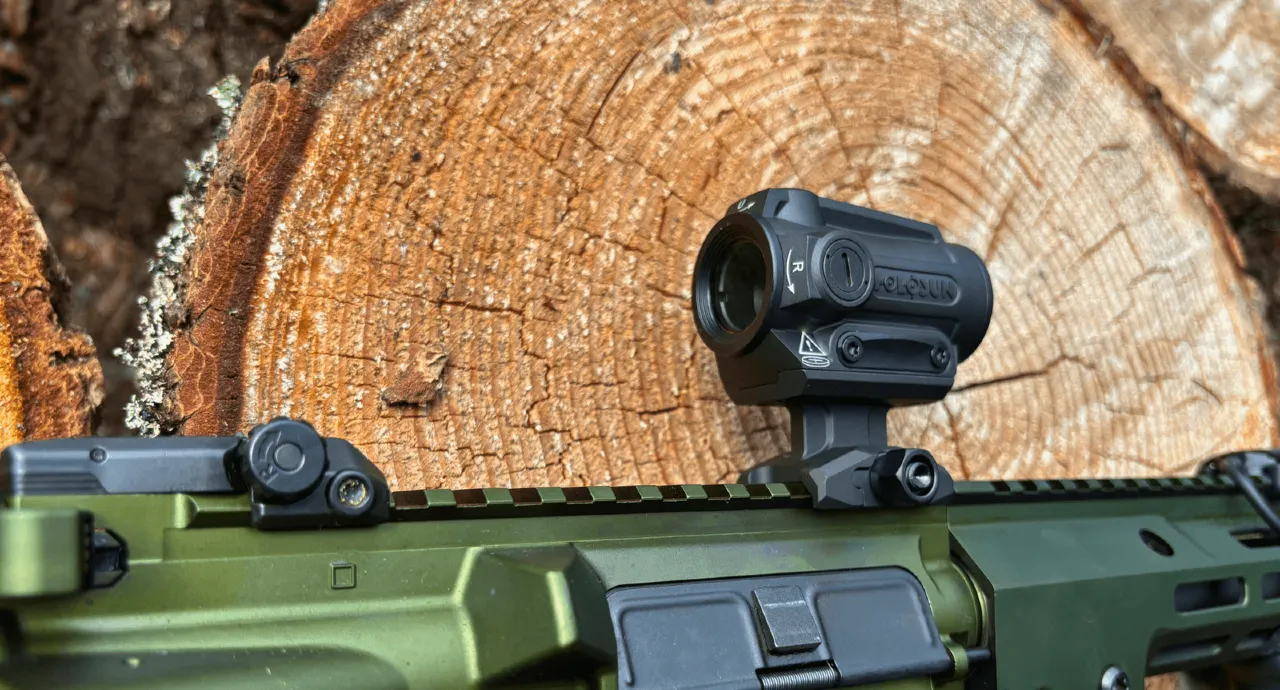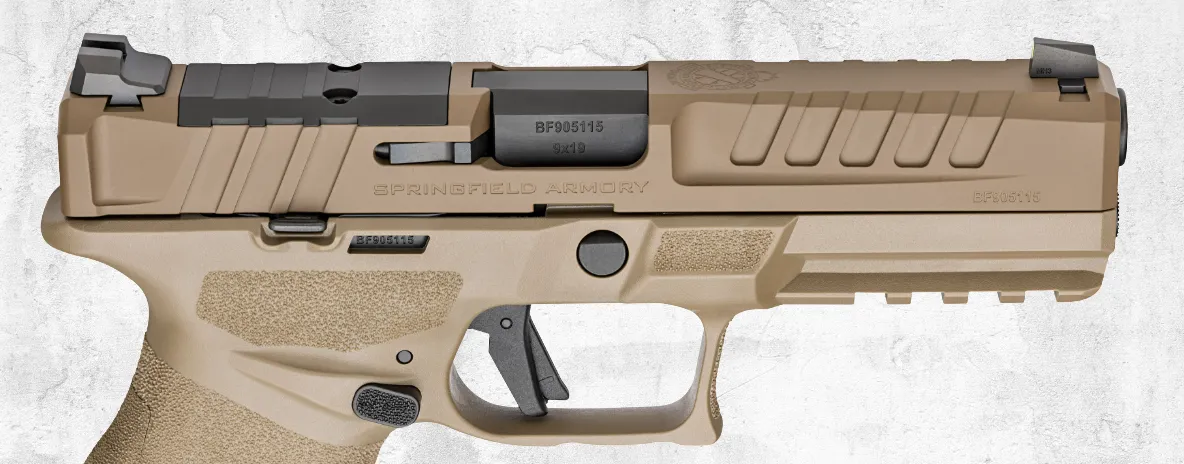The rail section of your rifle is one of the largest areas on the gun. The type of rail you put there has a larger impact than you think, especially in light of the M-LOK vs Picatinny debate. Your rifle’s rail affects the modularity, weight, and upgrades of the rifle over the course of its lifetime.
If you are looking at the modern market to select your rifle rail, you will find most are one of two systems: M-LOK and Picatinny. Each of these systems have been used for over a decade at this point, so choosing between the two can be difficult.
We are going to go over how each system works, their pros and cons, how compatible they are, and which one you should choose depending on your situation.
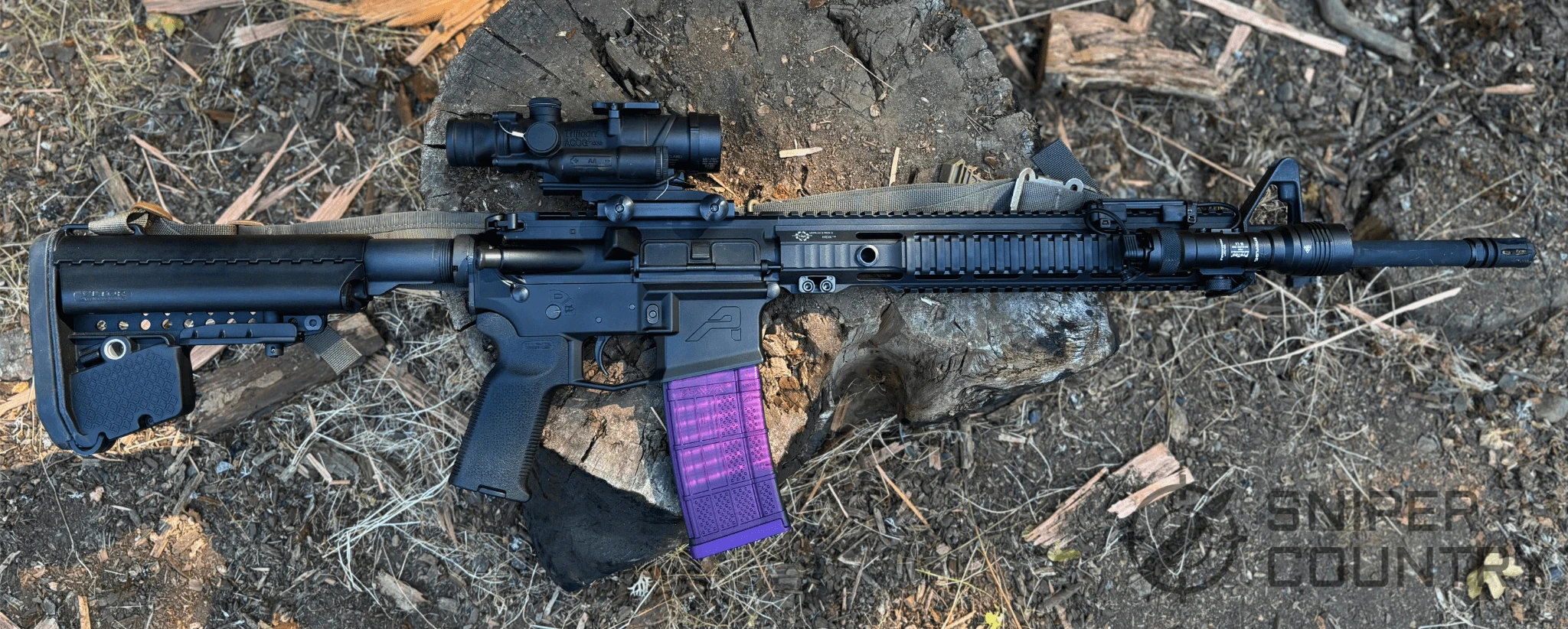
What Is M-LOK?
In the late-2000s Magpul decided they were going to try and create the next evolution of modular mounting systems. This would build off the idea of the SOPMOD program within the military that attempted to improve the modularity of and accessories for the M4A1 carbines.
The goal was to make a thinner, lightweight mounting system that used slots to attach accessories. This used negative space to attach accessories without the need for solid rail sections.
This would allow for better airflow to the barrel, less material being present on the handguard which in turn meant light handguards. Each handguard would be made out of either polymer or aluminum for greater weight savings.
Ultimately, the accessories for the rails would have an extension fit between the rail and then be tightened down. This would cause the mounting section to rotate into place and then act like a dead bolt, holding whatever the accessory is in position.
These accessories can be anything from lights to QD mounts to partial rail sections and heat guards. This gives MLOK the advantage over Picatinny. The modularity is very high since there are options to directly mount MLOK accessories or smaller sections of Picatinny rails to the handguard.
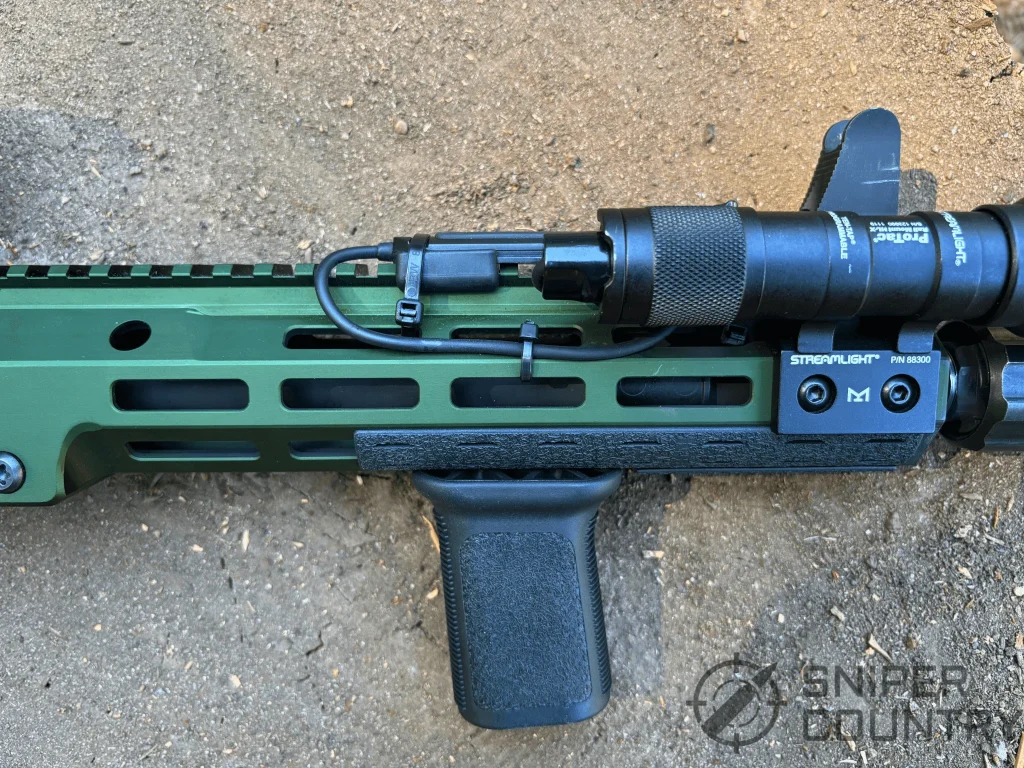
What Is Picatinny?
Picatinny, also known as MIL-STD-1913, was the standardization of previous mounting designs for the US military. This style would be solidified in 1995 and integrated into the SOPMOD program as part of their mounting methods.
Picatinny uses a ridge-and-slot rail which uses positive space to secure the accessories to the rail. This means there is a lot of material that is used in making a Picatinny handguard, especially the classic quad rail designs.
This makes the rail incredibly durable and stiff. That stiffness makes it better for mounting sights and lasers to the rifle with a lower risk of the zero shifting due to impacts. The rails themselves are very durable as a result, often requiring a lot of force to cause them to warp.
Picatinny is usually located along the entire length of a handguard, especially on the quad rails. This made it easier for more customized placement of Picatinny accessories but made it uncomfortable to hold for long periods of time.
Due to the ridge edge of the mounting surfaces, end users would often have to wear gloves, use some sort of rail cover, or other method to keep the rail from scraping or cutting their hands. This led to a number of rail cover designs that add a certain aesthetic for rifle builds.
Picatinny is one of the most popular mounting systems, and it is still compatible with both old and new accessories as long as they have the mounting interface. The system is so reliable it is still used as a top strap rail even with modern M-LOK compatible handguards for securely mounting lasers or back up iron sights.
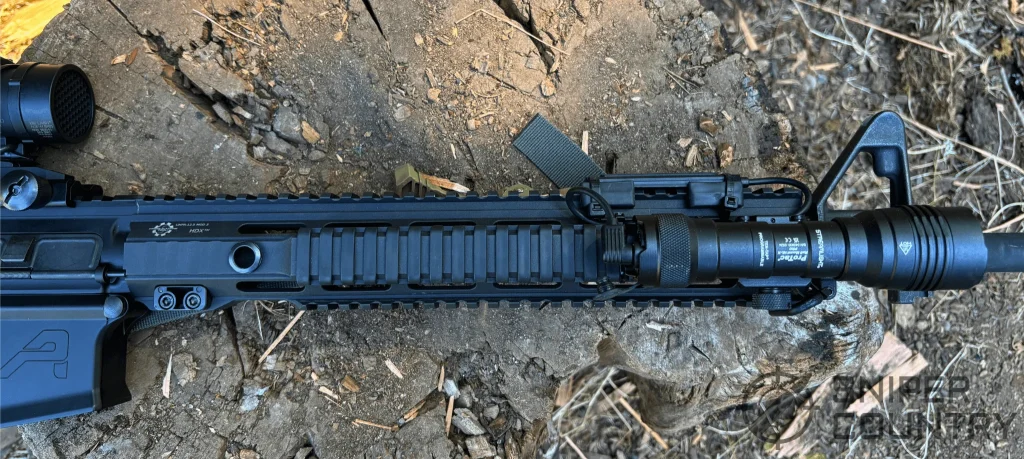
Side-by-Side Comparison Table
Comparing rail systems can be tedious so we made a simple side-by-side table for you to reference. This way you can easily see what each style has going for it.
| Feature | M-LOK | Picatinny |
| Design | Slot-based | Continuous rail w/ ridges |
| Weight | Lighter | Heavier |
| Mounting Method | Direct bolt-in | Clamps over rail slots |
| Modularity | High | Medium |
| Accessory Availability | Growing but extensive | Extremely common |
| Ergonomics | Smoother, less bulky | Can feel bulky, blocky |
| Aesthetics | Sleek, modern look | Classic, tactical appearance |
| Ideal Use | Lightweight, modular builds | Duty guns, optics, universal |
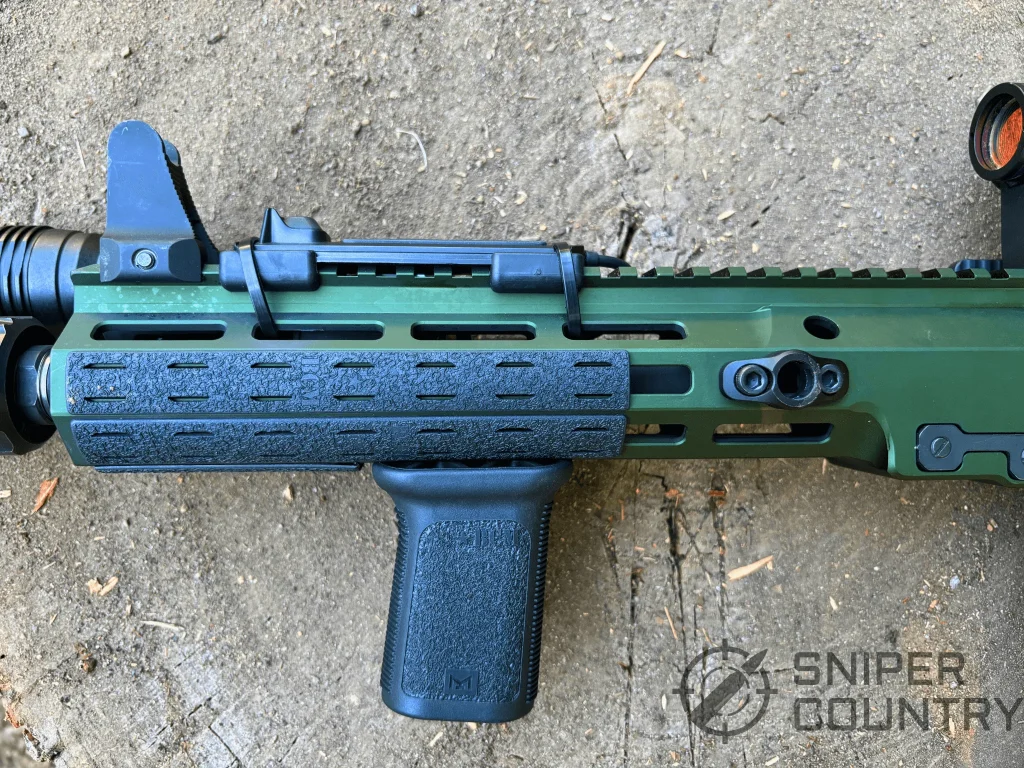
Pros & Cons of M-LOK
M-LOK is the newer mounting system and built off of previous experience. But there are benefits and deficits of the design.
When it comes to modularity, M-LOK is the best system on the market. This is because you can consistently add accessories, rail panels, and other things that improve the quality of life when using the rifle.
M-LOK handguards are lighter than their quadrail equivalents, allowing for a broader number of end users who may struggle with heavier rifles. The lower handguard weight allows for the use of more force multipliers like lights and handstops/foregrips.
The downsides are that M-LOK does not have as much material as Picatinny. While this gives benefits it also does not make it as resilient to excessive misuse and abuse that can occur. Most end users will be perfectly fine with using M-LOK, but a smaller percentage will need a much more durable rifle.
Here is a quick overview of the pros and cons of the M-LOK.
✅ Pros
- Lightweight and low profile
- Easy to mount/remove accessories
- No sharp edges — more comfortable for bare hands
- Superior airflow and heat dissipation
- Increasing military adoption (USSOCOM approval)
❌ Cons
- Requires tools to install accessories
- Less backwards-compatibility with older gear
- Slightly more complex for first-time users
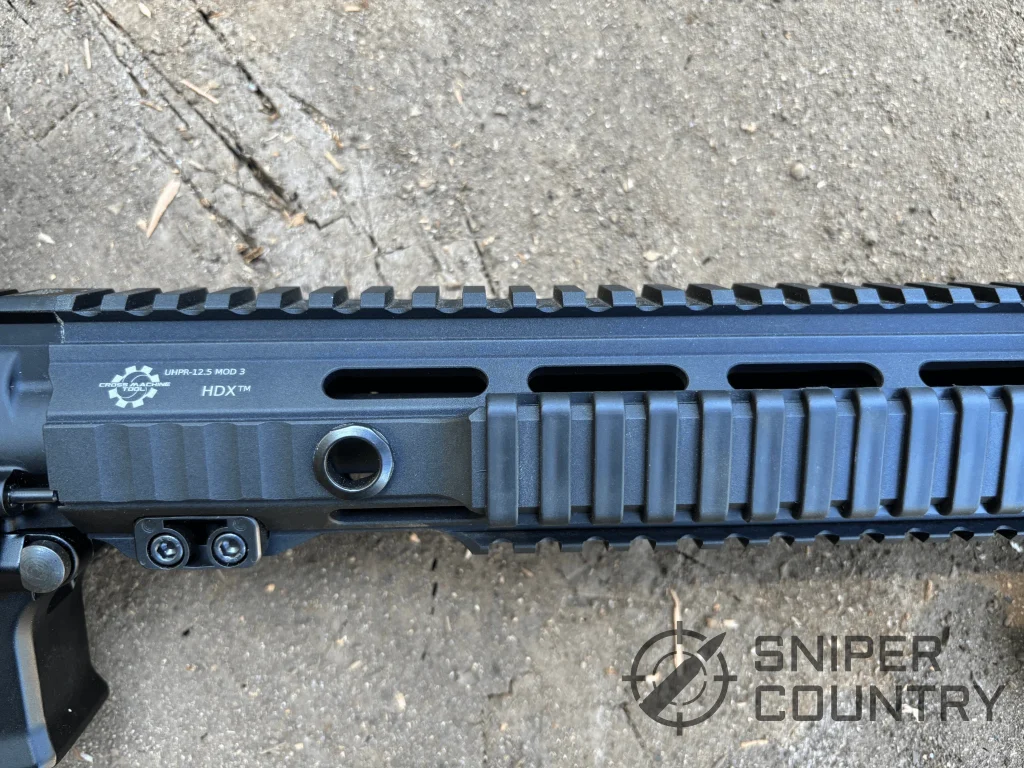
Pros & Cons of Picatinny
Picatinny can be thought of as the legacy mounting system for modern rifles. It fits a broader need category and has a number of benefits over its successors. This is primarily in terms of durability and mounting security.
Picatinny is one of the most reliable mounting surfaces for sights and lasers. This means that there will be less of an issue regarding zero drifting with an accessory mounted to a Picatinny rail. That mount will be able to take more impacts and hold zero better than some other options on the market. With the caveat that the rail itself is made to spec.
All this durability and zero retention comes at the cost of weight. While it may not matter in the short term, in the longer term that extra weight will increase the rate of fatigue when using the rifle for extended periods. This will result in a degradation of performance sooner than with a lightweight rifle.
The user who is going to need that durability is not the individual who casually shoots once a year. It is for the individual who will put that rifle through rigorous conditions with a lower maintenance routine out of necessity.
This quick reference of the pros and cons will illustrate that there’s more to mounting systems than needing to be lightweight.
✅ Pros
- Extremely rugged and time-tested
- Universally compatible with a wide range of accessories
- Quick attachment/detachment with no tools (for some mounts)
❌ Cons
- Heavier than M-LOK
- Bulkier profile — can interfere with hand placement
- Often overkill for casual shooters or lightweight builds
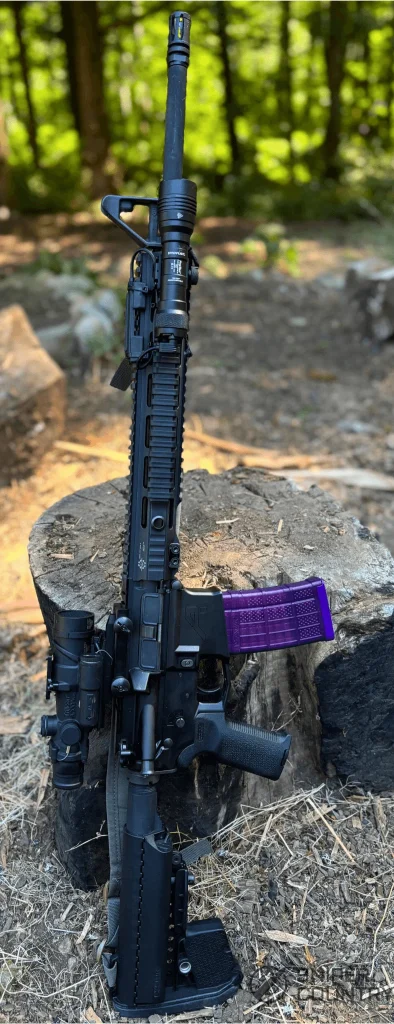
M-LOK vs Picatinny: Which One Is Right for You?
Of course the question will always be asked “Which option do I pick?” M-Lok vs Picatinny will always be debated, but the reality is most rail systems made today use some combination of the two. So we are going to emphasize the choice between an M-LOK handguard and a Picatinny quad rail handguard.
This distinction makes it easier to make the choice between the two systems.
- Choose M-LOK if:
- You want a lightweight build (e.g. competition, home defense)
- You value a sleek look and better ergonomics
- You’re building a modern AR-15 with minimal weight
- You want a lightweight build (e.g. competition, home defense)
- Choose Picatinny if:
- You’re running legacy gear or optics
- You need absolute durability (e.g. military, LE duty use)
- You want compatibility with older accessories
- You’re running legacy gear or optics

What About KeyMod?
This brings up the subject of KeyMod. KeyMod was M-LOK’s primary competitor in the late 2000s with KeyMod vs MLOK being the primary internet debates. On paper, KeyMod seemed to have a lot of the same advantages as the early MOE style of M-LOK.
However, US SOCOM found that the Keymod mountings did not hold together as well as MOE/M-LOK did under drop testing. Combined with the lack of standardization and fewer accessories, Keymod is not as popular a mounting system.
KeyMod is still a good option if you have KeyMod compatible accessories or are looking for a more budget friendly rail. KeyMod tends to cost less due to the lack of demand, making them more affordable than other options. Additionally, using KeyMod for cloning rifles is still another viable use case.
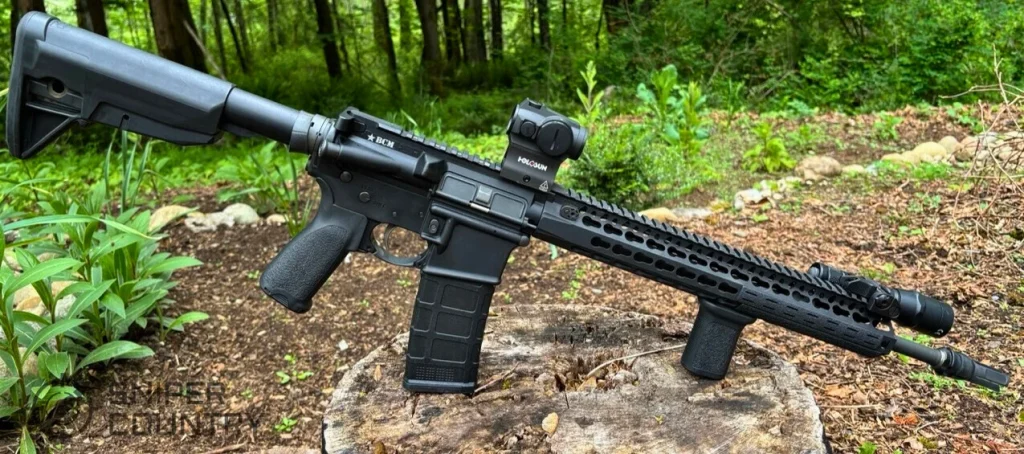
Conclusion
M-LOK vs Picatinny really comes down to your specific situation. M-LOK is very modular, lightweight, and works with most modern accessories designed for the system. Picatinny is durable, a solid mounting surface, and heavy.
If you’re mounting things that do not need to hold a rigid zero while remaining lightweight, a polymer or aluminum M-LOK system will work. If you need everything to hold zero and survive in a dynamic environment, Picatinny is hard to beat but is heavy.
What you need is not necessarily what others need. Selecting the right rail system for you is more important than someone else’s opinion. You may need more compatibility with modern options, or you could be chasing down a rifle clone with the classic quadrail vibes. Your rifle build needs to match your desires.
FAQ
Yes. If a Picatinny rail section is mounted to an M-LOK handguard or rail, you can use Picatinny accessories. Additionally, many modern handguards have a Picatinny top rail with M-LOK on the rest of the handguard.
Both Picatinny and M-LOK are used by the military, specifically the US Military. These are both standardized rail systems used throughout NATO. Due to military procurement, both rails will likely be used together for decades.
Yes. M-LOK is strong enough for real world use, having been adopted by multiple militaries post-2014.
Most companies make M-LOK and Picatinny mounting systems for their products, so M-LOK accessories are not more expensive than other standardized systems.
Most standard AR-15 upper receivers are compatible with M-LOK handguards. This will allow you to use M-LOK accessories or to mount picatinny rail sections to the sides of the handguard.

